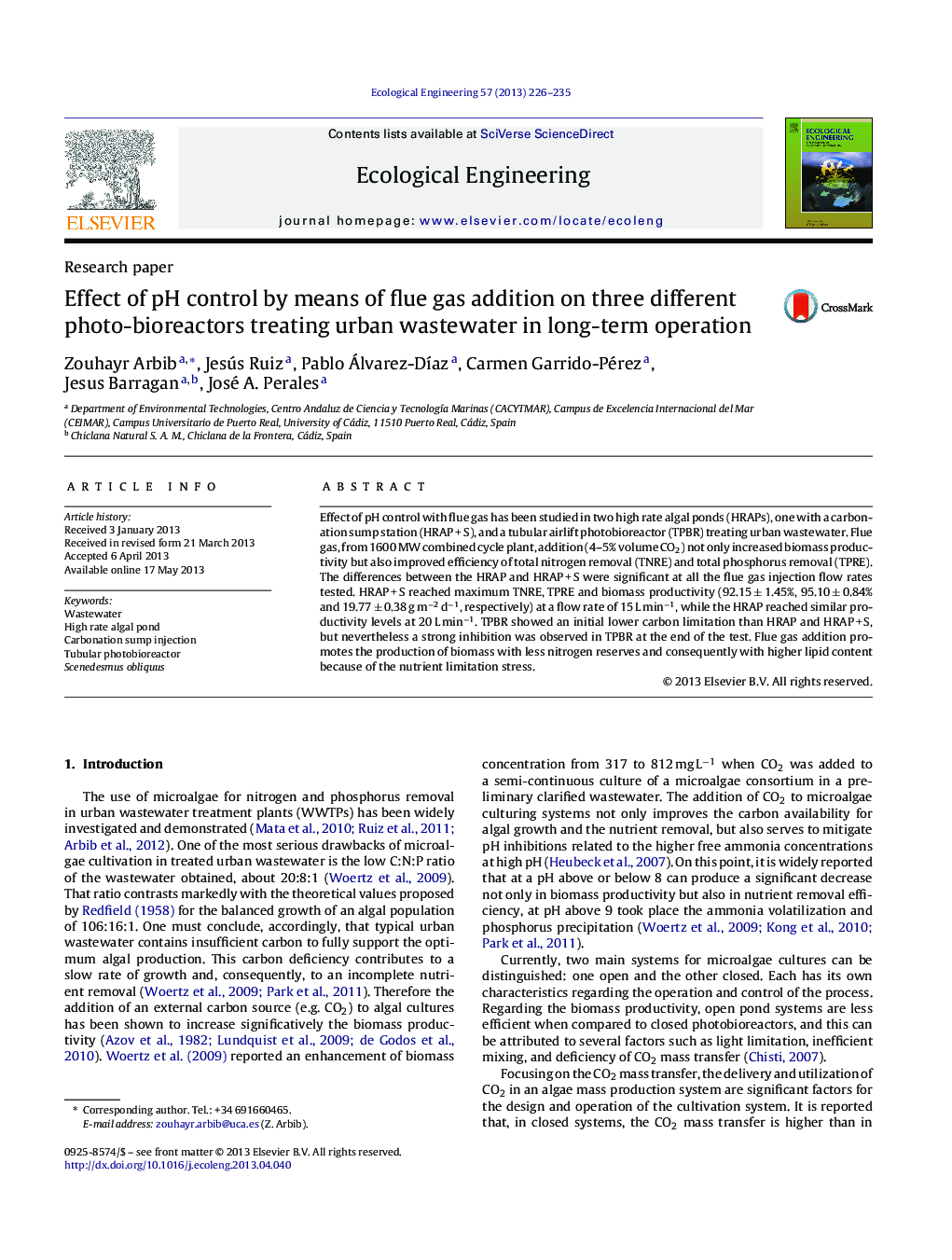| کد مقاله | کد نشریه | سال انتشار | مقاله انگلیسی | نسخه تمام متن |
|---|---|---|---|---|
| 6302615 | 1618041 | 2013 | 10 صفحه PDF | دانلود رایگان |

- A high rate algal pond and tubular airlift photobioreactor were compared.
- CO2 enhanced greatly nutrient removal and biomass production.
- Carbonation sump station enhanced greatly the CO2 transfer.
- Severe biofouling took place at tubular photobioreactor due to extreme high temperatures.
Effect of pH control with flue gas has been studied in two high rate algal ponds (HRAPs), one with a carbonation sump station (HRAP + S), and a tubular airlift photobioreactor (TPBR) treating urban wastewater. Flue gas, from 1600 MW combined cycle plant, addition (4-5% volume CO2) not only increased biomass productivity but also improved efficiency of total nitrogen removal (TNRE) and total phosphorus removal (TPRE). The differences between the HRAP and HRAP + S were significant at all the flue gas injection flow rates tested. HRAP + S reached maximum TNRE, TPRE and biomass productivity (92.15 ± 1.45%, 95.10 ± 0.84% and 19.77 ± 0.38 g mâ2 dâ1, respectively) at a flow rate of 15 L minâ1, while the HRAP reached similar productivity levels at 20 L minâ1. TPBR showed an initial lower carbon limitation than HRAP and HRAP + S, but nevertheless a strong inhibition was observed in TPBR at the end of the test. Flue gas addition promotes the production of biomass with less nitrogen reserves and consequently with higher lipid content because of the nutrient limitation stress.
Journal: Ecological Engineering - Volume 57, August 2013, Pages 226-235